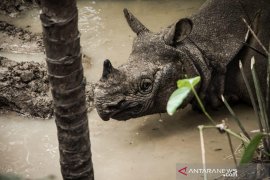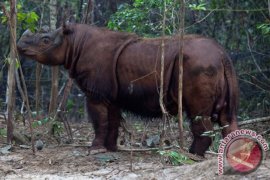"The number of Javan Rhinos in the Ujung Kulon national park was around 20-40 heads in 2010," Singky Soewadji said here recently.
He expressed pessimism that the endangered animal`s population could increase in the coming years.
"This is because the area of forested land in Indonesia has shrunk and is continuing to shrink," he said.
Many habitats of rare animals had been converted into plantation areas, he said, adding that quite often plantation managers ordered the killings of endangered animals living in the forests.
"Such a condition is disadvantageous for Indonesia because many of its rare animals will die," he said.
And for the reproduction of rhinos, the animals need particular habitats to mate.
"Both male and female rhinos need comfortable and peaceful habitats which are free from disturbances by human beings. Unfortunately, they cannot find such a habitat nowadays in this country," he said.
If the government did not pay serious attention to the Javan rhinos, the animal would face the same fate as the now extinct Bali tiger and Java tiger, he said.
The number of Sumatran tigers on Sumatra island is estimated at 400 heads now.
The Javan rhinoceros weighs 1500 - 2000 kg (3200 - 4400 lb) and has a length of 3 - 3.5 m (10 - 11`). It has one horn and prominent folds in the skin, similar to the Indian rhino. The horn grows onto a roughened area of the skull (rather than being "rooted" in the skull). The Javan rhino is hairless except for its ears and tail tip.
Apart from the one-horned Javan rhino, Indonesia has the Sumatran Rhinoceros (Dicerorhinus sumatrensis), which is a member of the family Rhinocerotidae and one of five extant rhinoceroses.
It is the smallest rhinoceros, although is still a large mammal, and has two horns. (*)
Editor: Aditia Maruli Radja
Copyright © ANTARA 2011











